BAR HARBOR—“Hey, Harry!”
“Harry!”
“Good afternoon, Harry!”
“Harry!”
“Is that Harry over there? It is! Harry!”
Harry Owen walked onto the grounds of Bar Harbor’s Stone Barn Farm Preserve at the corner of Crooked Road and Norway Drive to a chorus of greetings, smiles, and the occasional, enthusiastic hugs, catching up with friends and strangers-who-are-already-his friend as they celebrating the land that he and his wife, Mary “Cindy” Owens took care of for decades. The Stone Barn Farm was once theirs, and Saturday was a celebration of its restoration and preservation.
“Who is that man?” one young girl asked as Harry was surrounded by well-wishers.
“Someone special,” her dad answered.
The little girl nodded like she knew that her dad had to be right.
According to Maine Coast Heritage Trust, “Harry and Cindy Owen bought Stone Barn Farm in 1963. In 2001, the Owens conserved their property through a conservation easement with Maine Coast Heritage Trust (MCHT). It acquired the property in 2019 to open it as a preserve.”
The Owens, Maine Coast Heritage Trust, and community donors worked with architect Carla Haskell, engineer Dennis Riley, and general contractor R.L. White to preserve a barn that dates to the early 1900s, a barn and farm that’s been photographed by professional photographers and visitors. The farm is 128 acres and about 20 of that is open field. There is forest. There is frontage on Northeast Creek. There’s a pond. There are wetlands. There was recently a black racer snake sighting.
The cedar-shingled farmhouse dates back to between 1840 and 1860. The carriage house from sometime in the late 1800s.
“Restore and preserve,” a smiling Riley said as crowds gathered and danced and ate on the back lawn before the approximately two-mile-long trail network.
“It feels good,” Riley said to have it preserved and to be part of it.
Maine Coast Heritage Trust has been restoring and stabilizing the structures on the property, which includes the barn, the farmhouse, the carriage house and gazebo.
Harry and Cindy were people who served their community. Harry taught. Cindy nursed. Harry gardened in the spring. Their sunflowers, planted where lettuce gardens once where, inspired photos and poems. They hosted weddings.
They worried about development on the island.
Harry wrote in a MCHT survey ““I feel that development on MDI is a disaster – within the next ten years every available field and wood and lot will be subdivided for houses. The whole character of the Island will be changed – MDI will become suburbia.”
Owen didn’t want house lots, not even 42 of them, which at the time would have been allowable in the town’s land use ordinances.
He also told the Bangor Daily News in 2001, “I’d roll over in my grave if I knew there was a fun park or a golf course up there in my field.”
So, they put the land into a conservation easement. That means that it cannot be developed.
Before she died in 2018, Cindy was quoted as saying, “It’s our way of giving back to our friends and our community for all the happy times we’ve had here.”
THE UPGRADES
The Maine Coast Heritage Trust bought the property and began a $2.5 million campaign to make the site into a public preserve.
“Stone Barn Farm is listed on the National Register of Historic Places. It was built in 1907– 116 years ago—and MCHT is working to make sure it stands for many more years into the future,” said Renee Duncan, MCHT’s MDI regional outreach manager
and Stone Barn Farm steward.
“Long before MCHT stewarded the place, community members walked there, picnicked, sledded, and enjoyed the peacefulness of it,” she said. “MCHT is opening that invitation for the whole community to learn about and enjoy Stone Barn Farm. We’ll continue to offer programming and host events.”
That invitation has included some upgrades. MCHT expanded the parking lot, which is tucked in behind the road and was filled on Saturday for the celebration. The barn’s upgrade and parking lot was possible because well over 200 donors gave to MCHT to make it a place the public could enjoy and celebrate.
THE HISTORY
Before the barn was built, the Wabanaki would hunt and fish and trade in the area of Northeast Creek, which was bountiful with wildlife and game as well as waterfowl and shellfish.
By the nineteenth century the area became the Emery District.
Tim Garrity writes,
“The Emery District was a cluster of six farms that surrounded the headwaters of Northeast Creek. According to farming historian Todd Little-Siebold, the area encompassed about 1,000 acres of farmland divided among six farms. In the 1860 census, the heads of household were listed as Jared Emery, Joel Emery, Theodore Paine, Richard Paine, and Sally Emery. Joel Emery held the largest plot (610 acres) and Richard Paine the smallest (45 acres).”
The crops were mostly animals. About 95% of the land was not farmed. Farmers earned extra money via other trades such as carpentry, Garrity writes. When the Civil War occurred, the farms in the area started to die out because of the transportation of crops from the Midwest and West. This was thanks to the railroad. Farmers began to focus on dairy and market goods to cater to summer visitors.
And the Stone Barn Farm? It’s theorized that the land belonged to Eben Salisbury back in 1807. He had two children. Then Thomas Paine, Jr. his wife Olive Hadley, and their descendants owned the land until 1907. One of those descendants, Richard, served in the Civil War.
Garrity writes,
“When Richard went to the war, Sophia stayed on the farm during the winter and spring of 1862-3 with three-year-old Edgar and one-year-old Willis. Sophia was pregnant with another child, Maynard, who would be born in March 1863, while Richard was away. Sophia was left to manage a farm that produced a small crop of potatoes, 100 pounds of butter, and five tons of hay. In addition to her children, she had in her care two cows, two oxen, eight sheep, and a pig.[8] Even if she had the help of her mother and father-in-law, it is certain that both Richard and Sophia had each their own kind of suffering during the Civil War.
“The Twenty-Sixth Maine was sent to Baton Rouge, Louisiana, where it took part in the Union effort to wrest control of the Mississippi from the Confederacy. The men were plagued by diseases associated with swamps and poor sanitation, and several were wounded at a place called Irish Bend, by the Atchafalaya River. One of Richard’s comrades from Mount Desert wrote home with complaints about short pay, poor food (“boef with magets,”) chronic illness, and a regimental physician who was “drunk all the time.”[9] Richard was sick and unfit for duty for most of his time in the service. He was discharged from the Army in August 1863 and returned home, where another hardship soon followed. Sophia died in October 1864 at age 28.[
Richard pressed on, farming and marrying again, outliving three more wives. In 1867, at the age of 39, he married 30-year-old Mary A., and they were together 17 years until her death in 1884. Later that same year, when he was 56, he married 40-year-old Phebe A., and the marriage lasted eight years until she died in 1892. On September 2, 1894, at the age of 66, he married 53-year-old Julia E. Gott, who lived until 1908.[11] The farmhouse is equipped with a funeral door in the parlor, a grim practicality for such an age as the Paine family endured.”
THE SHEAS BUILD A BARN
The Shea Brothers owned the farm in the early Twentieth century. They built the greenhouse foundation at the Turrets at COA. They did the stonework at the town’s municipal building.
And they built the Stone Barn. They were masonry contractors and builders.
The National Register of Historic Places application reads, “The stone barn’s first story is constructed of glacial stone with granite sills and lintels, the whole of which is covered by an expansive gambrel roof with wood shingled frame end walls. Although it is not positively known why the Shea Brothers constructed a barn of stone, if nothing else it demonstrated their skill in building in such a material.”
They did long-term rentals.
Garrity’s piece recounts,
“In the 1930s, Frank Gray was a young boy whose family rented the Shea farmhouse. He recalls a frightening memory of his childhood, a cold Thanksgiving day when two of his friends were skating on the frozen Northeast Creek. As the Bar Harbor Times reported, “Charles Watson, 11 and Milton Leach, 10… were the victims of a near tragedy … while skating on Shea’s meadow. The ice broke and threw both boys into the pond in about six feet of water. The cries of the youngsters attracted the attention of Mr. Watson who rushed to the scene and dived into the water to rescue them.”[14]
“Frank recalls, “Oh yeah, I can see them now, standing in the washtub by the kitchen stove, undressing them. Milton was in the water longest and they got him up on top of Warren Haslam’s shoulder and he was right stiff. Warren had a heck of a job trying to hang on to him because he was so stiff, but when he tried to run with him, he just all relaxed and the water run out of his mouth. That must have been what artificial respiration would have done for him, for Warren to run with him. In my estimation, he probably would have died if he hadn’t.”
THE OWENS
In their time on the property, the Owens raised goats, chickens, and horses. They put panoramic windows in the kitchen so that they could gaze onto the pond and the field that rounds up. Cranberries grow on the meadow edges. They’d walk the property the same way so many do now.
They bought the farm for $17,000 and Harry’s quoted in a 2005 Meredith Goad piece in the Portland Press Herald article as saying, “We were living in Seal Harbor and I was looking for a farm. My life’s work idea was to teach in the wintertime and farm in the summertime.”
They couldn’t find a place.
But a doctor at the hospital mentioned the Stone Barn Farm to Cindy. She and Harry headed over. They knocked on the door. And it opened.
“We talked them into moving to Florida,” Cindy recalled to the Press Herald, “and we bought the place from them.”
They loved it. They weren’t alone. It became a popular place for strangers to stop. It became a place of photos and dreams, weddings and graduation pictures. Phish fans, having moseyed down to the island after a concert up in The County, stopped by and ended up pitching a tent in the backyard. Vogue Magazine did a photoshoot. He’d cleaned the house so it was spotless. They only took photos outside.
They’d tell people to send their best photos to them. They’d put them on the walls of the house. Even inside, you’d see the barn from multiple angles at multiple seasons, all through the lens of the people who stopped, who noticed, who wanted to preserve that moment.
Once, a German woman sent Harry a photo she’d taken of his house. She didn’t know his address. She sent it “to the gentleman who grows beautiful sunflowers near the gray stone barn.”
It got there.
That says something about the Owens, but it also says something about the island and the community that happens year after year as neighbor takes care of neighbor, capturing moments, preserving them in small ways like a photo, and in big ways like the Maine Coast Heritage Trust.
The Owens took care of stranger after stranger, and in a way MDI with its summer influx does that, too.
And the Owens? They welcomed everyone the same way Harry welcomed people saying hello to him on Saturday. With a smile. With open arms. With an eye toward community.
REBUILD
Dennis Riley, the engineer who worked on stabilizing and rehabbing the barn was all smiles Saturday afternoon.
MAINE COAST HERITAGE TRUST
The Maine Coast Heritage Trust (MCHT) is a nonprofit land conservation organization protecting and caring for vital lands on the coast of Maine. Through the generosity of donors, MCHT has made an extraordinary impact since its founding in 1970, working with partners to protect over 170,000 acres and 330 islands, including over 150 MCHT public preserves offering over 100 miles of hiking trails.
Photos: Shaun Farrar and Carrie Jones
LINKS TO LEARN MORE
Learn more about the cultural and natural history of Stone Barn Farm.
https://www.mcht.org/about-us/
For a virtual tour of the barn
Tim Garrity’s article on the site’s history
https://www.mcht.org/preserve/stone-barn-farm/









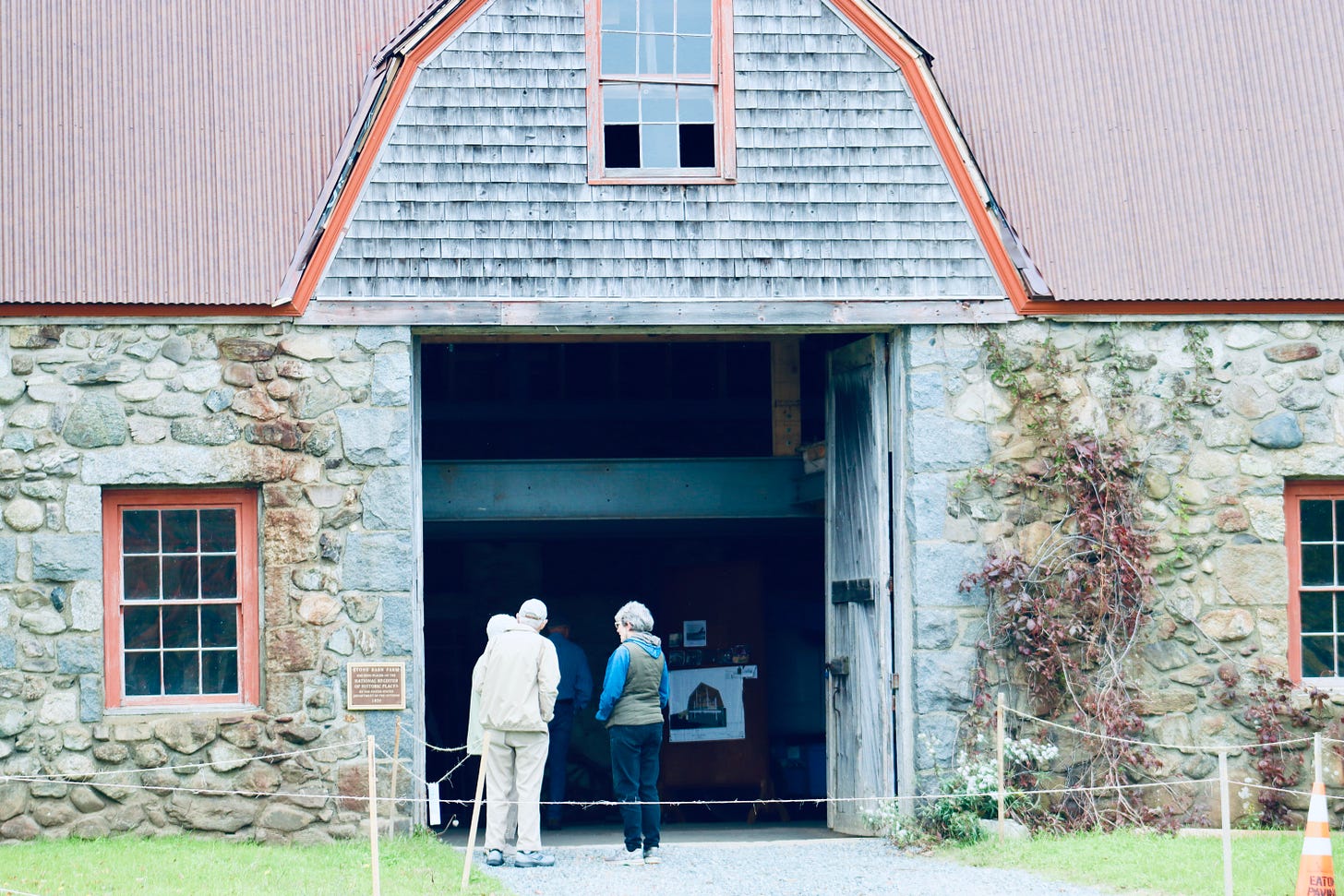

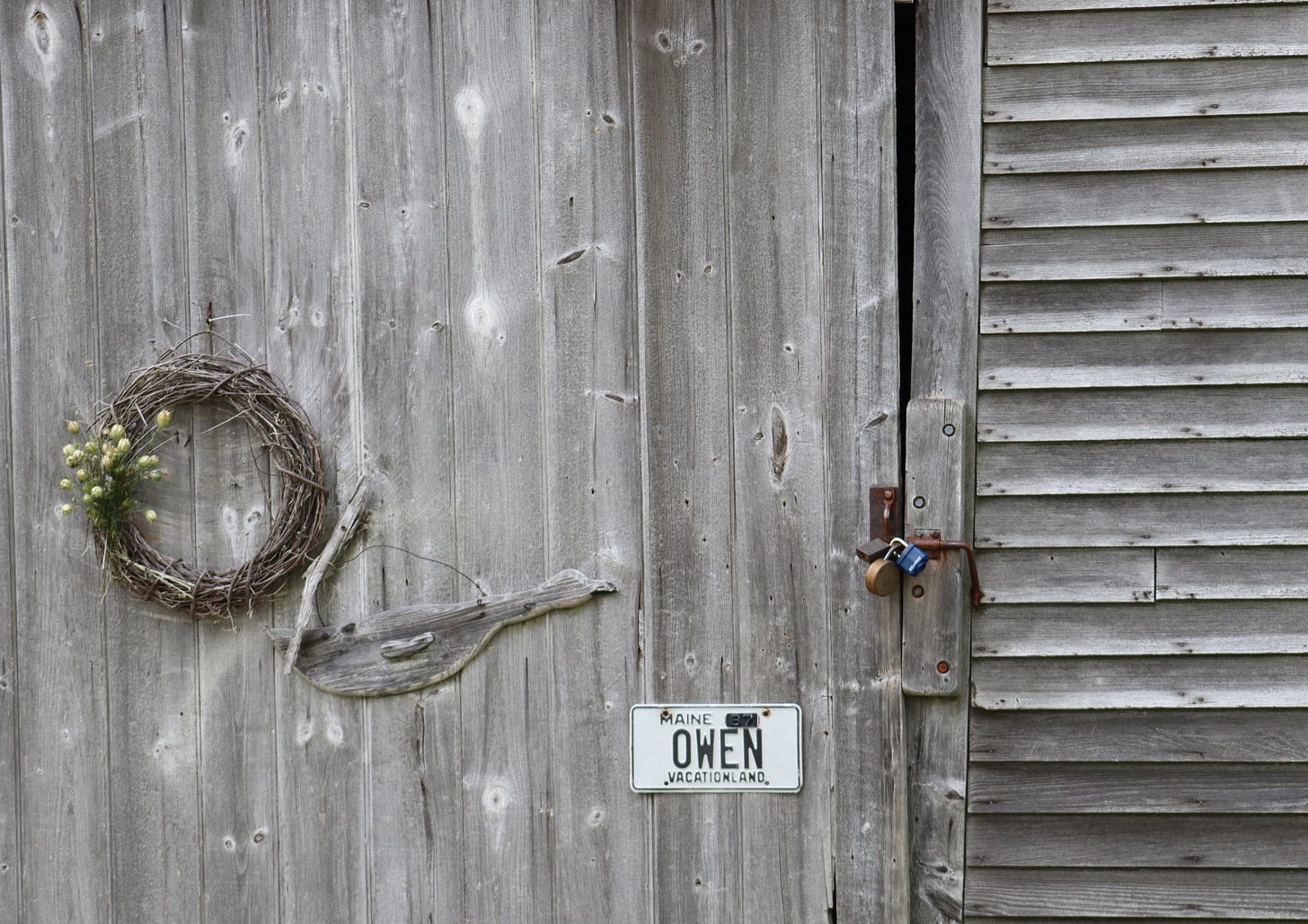



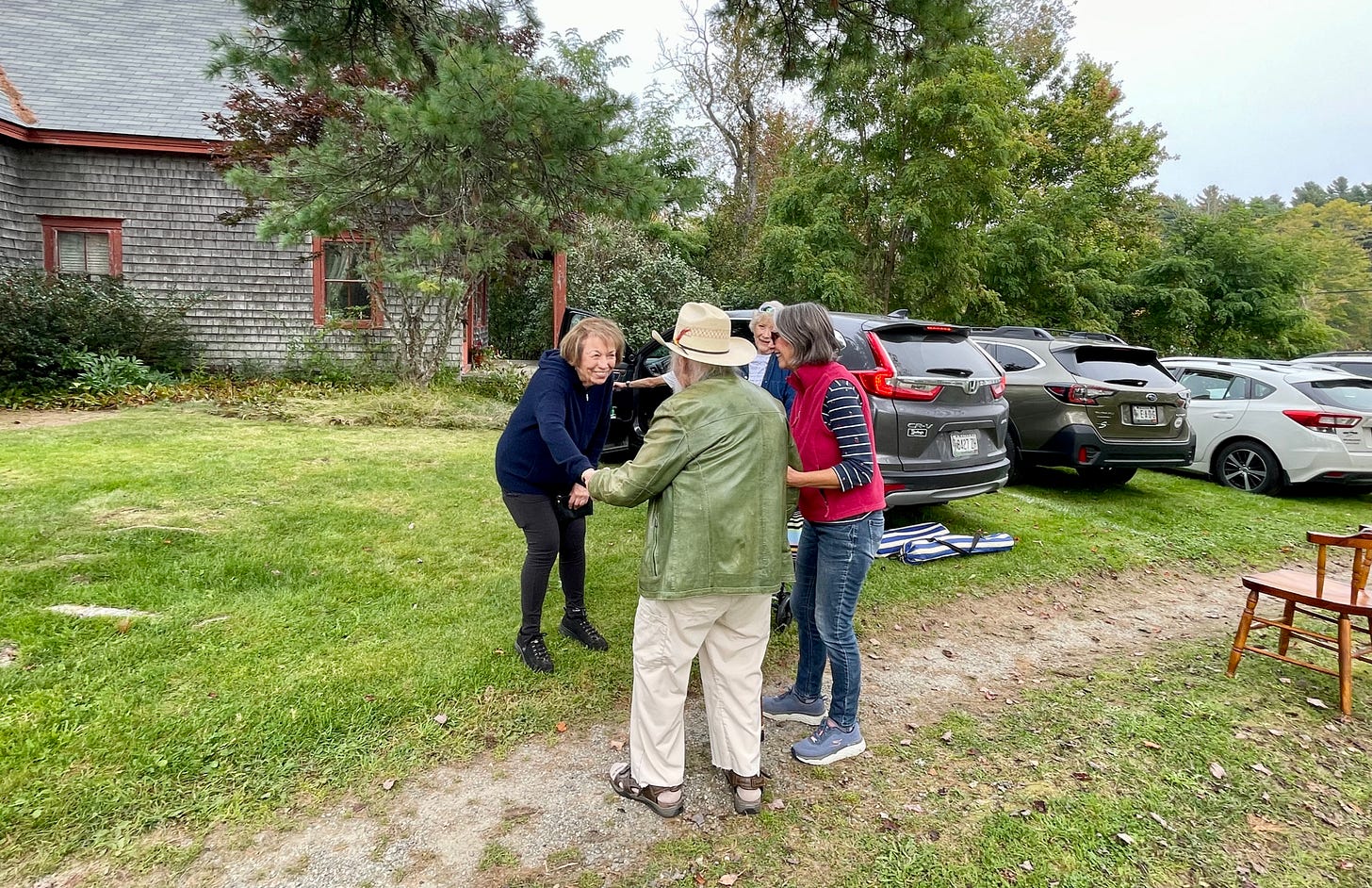
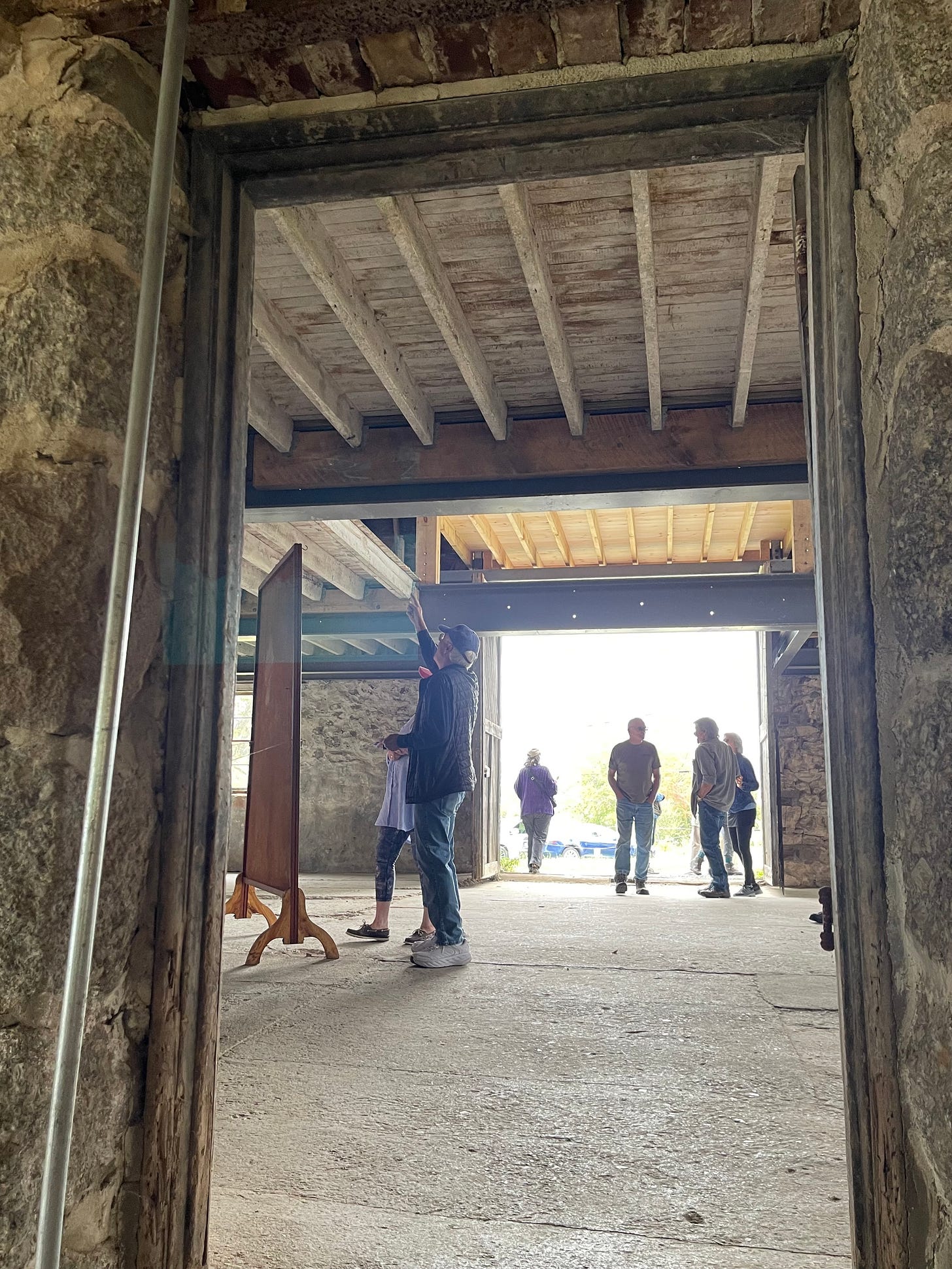
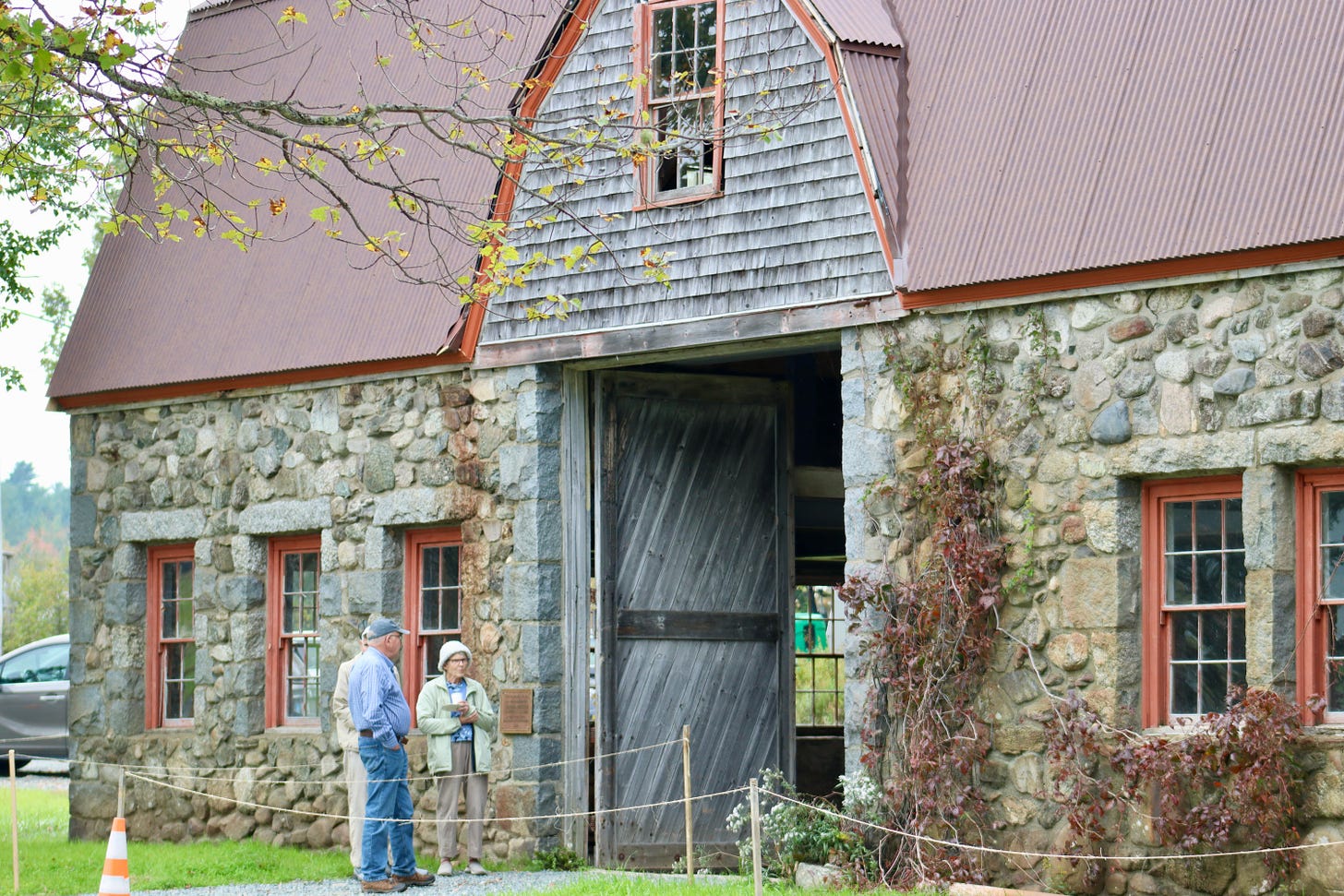
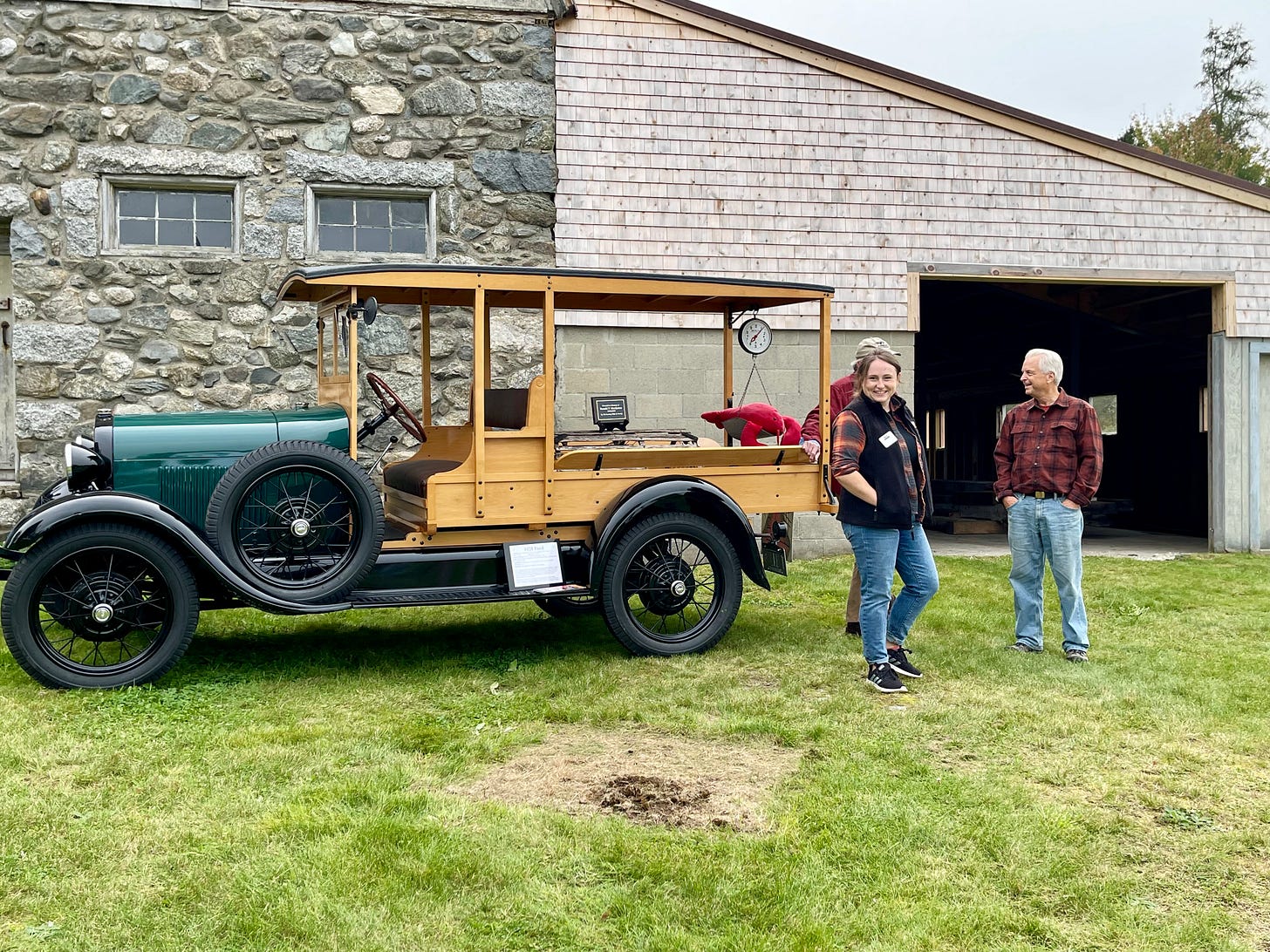
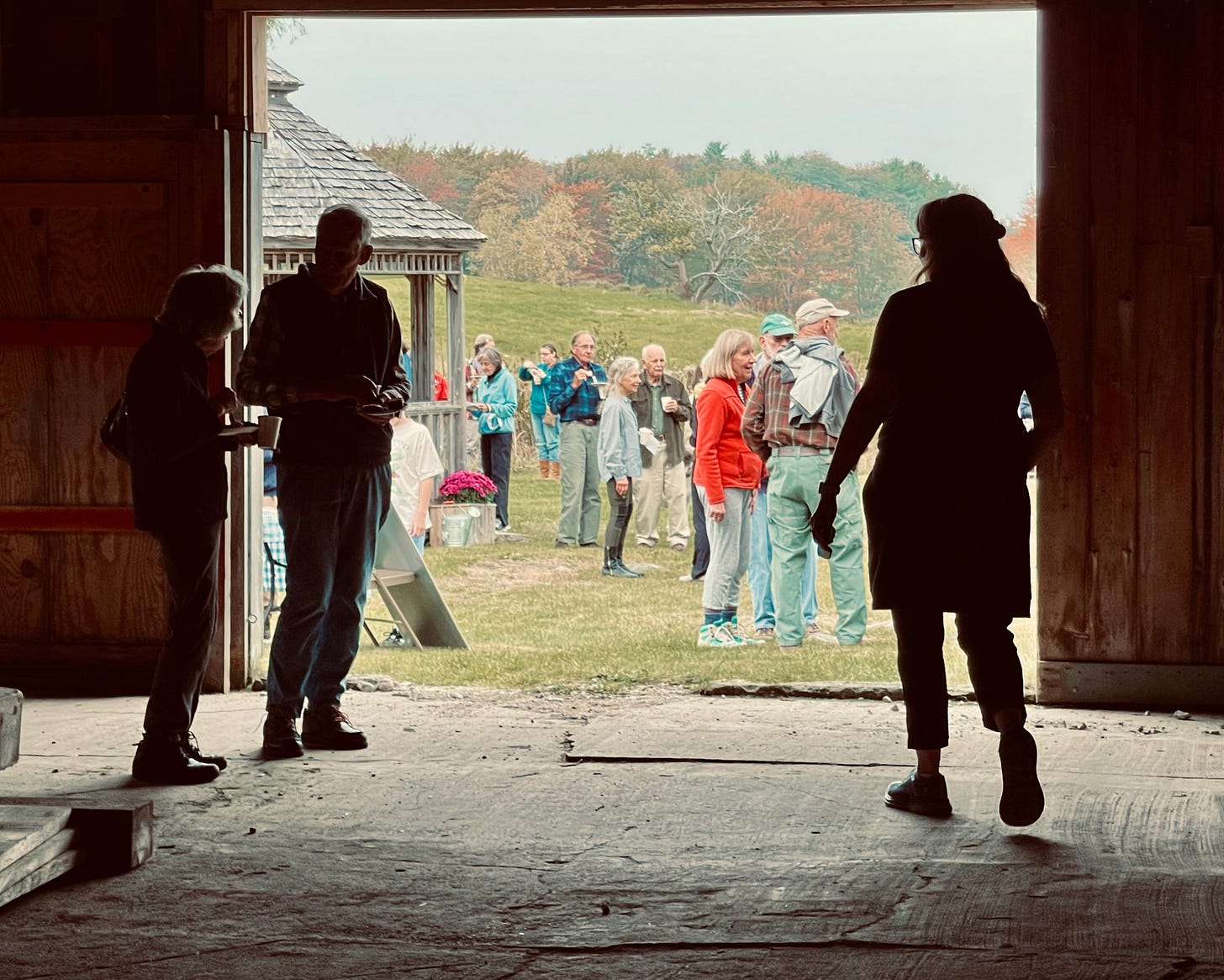



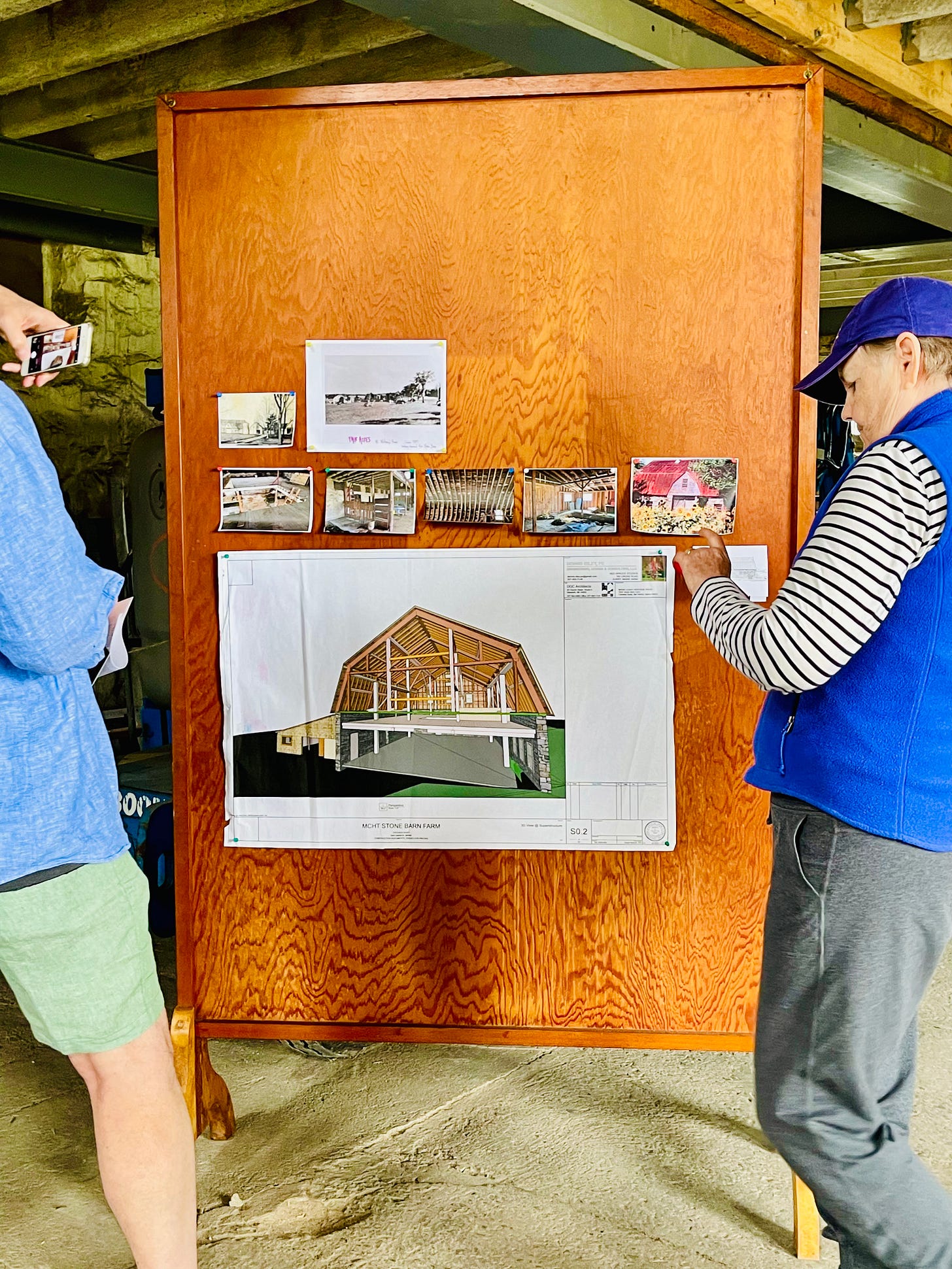
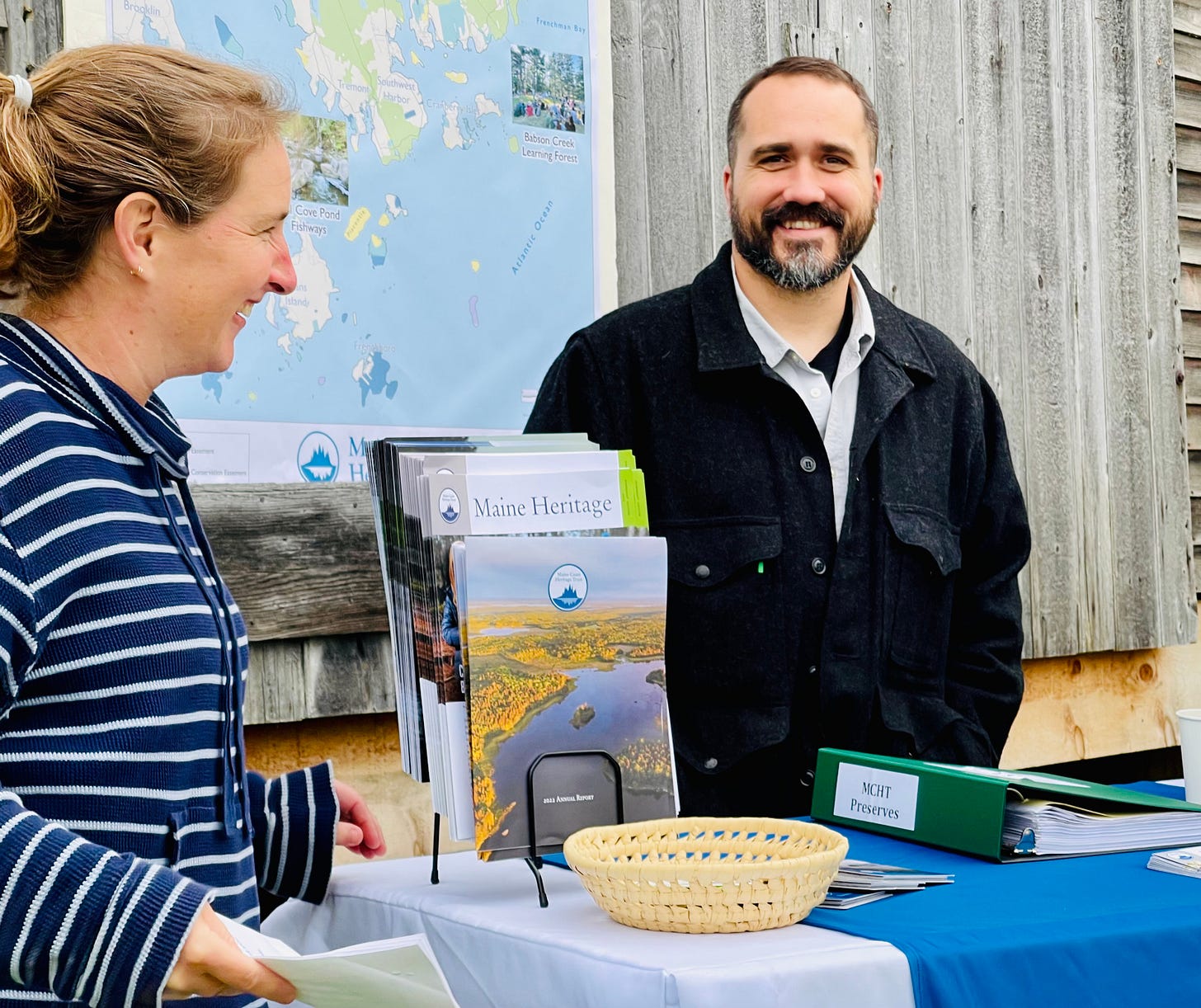
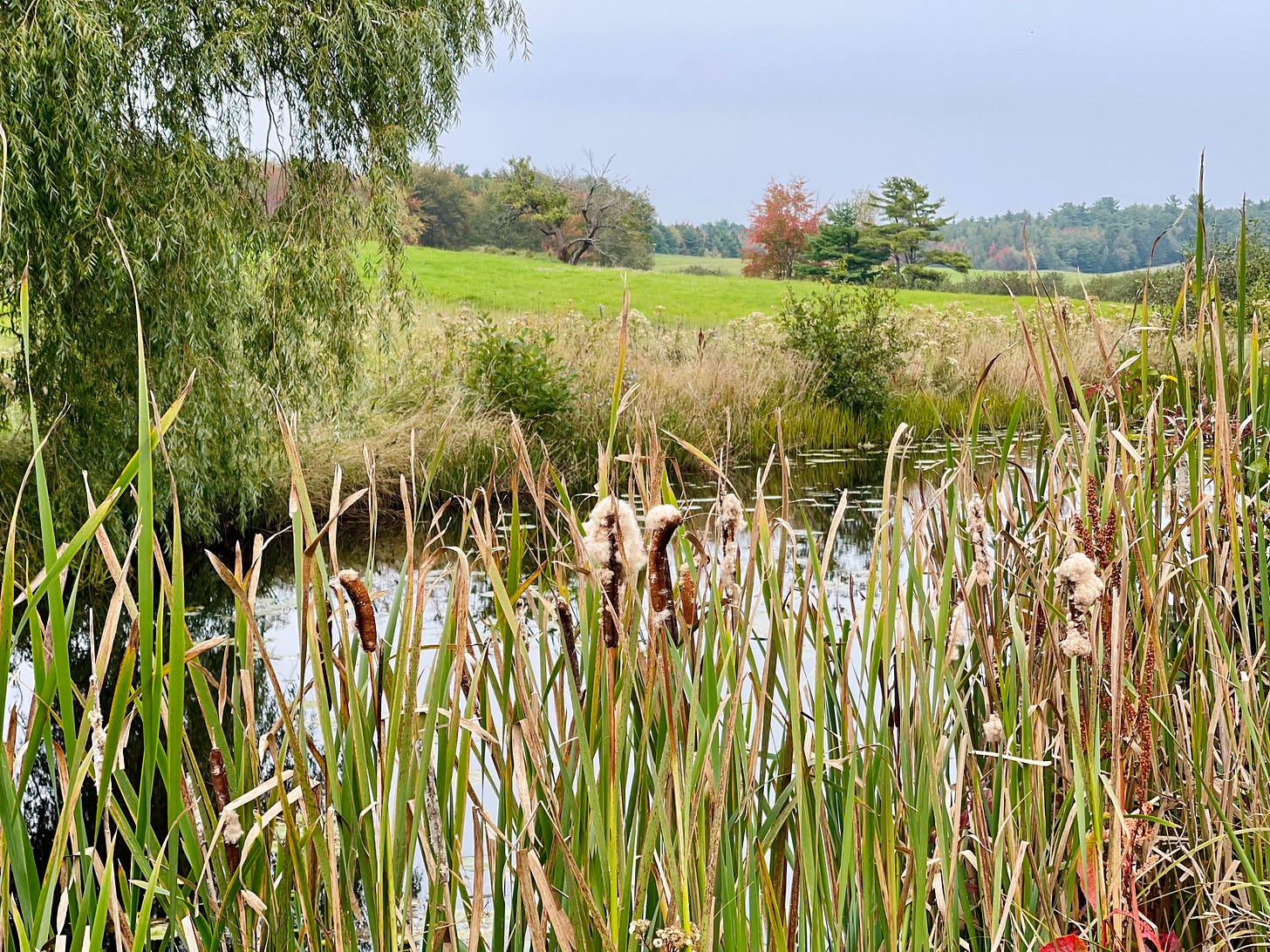
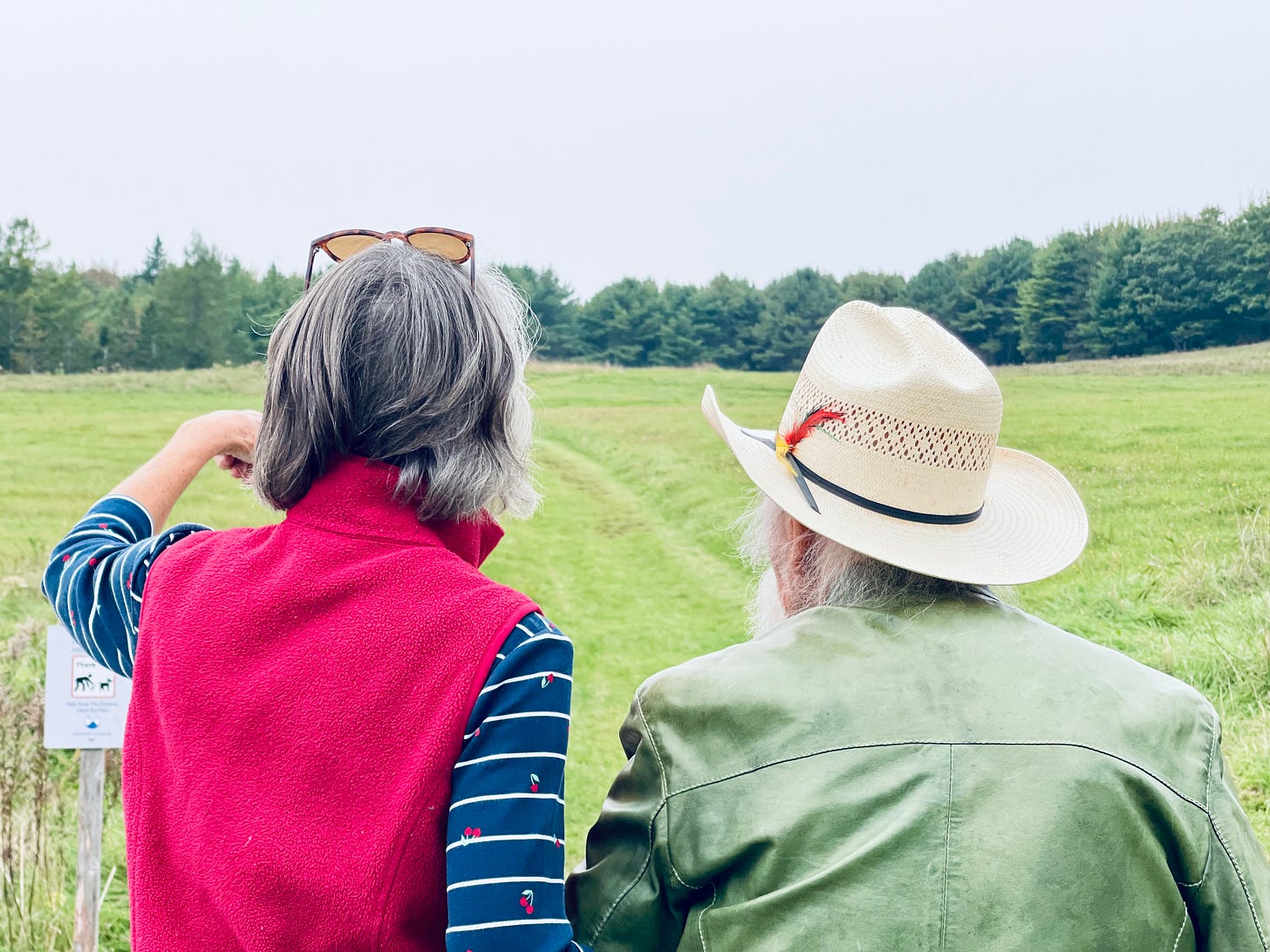

This is wonderful! When I worked at Summit House, I used to drive home to Ellsworth via the Crooked road just to see the sunflowers and the horses. It was always a peaceful decompression time.